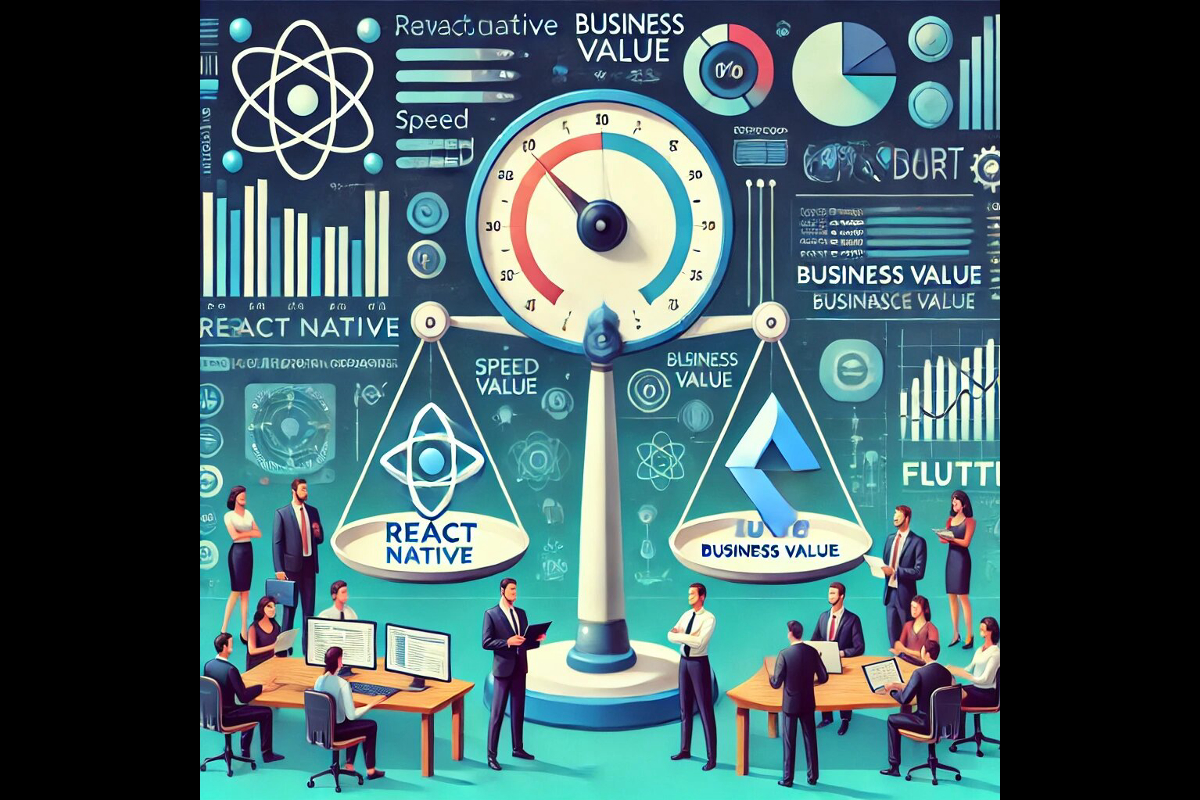React Native vs. Flutter: A Consultant’s Guide to Picking the Best Fit
In today’s fast-paced digital landscape, businesses need cross-platform mobile app development solutions that balance speed, cost, and performance. Two leading frameworks—React Native (backed by Meta) and Flutter (backed by Google)—dominate the market. But which one is the right choice ?
This blog breaks down the key differences between React Native and Flutter from a business perspective, helping you make an informed decision based on factors like development efficiency, long-term maintenance, talent availability, and client requirements.
1. Development Speed & Time-to-Market
React Native:
- Uses JavaScript/TypeScript, which is familiar to many developers.
- Hot Reloading speeds up development iterations.
- Leverages existing React knowledge, reducing the learning curve for web developers transitioning to mobile.
- Ideal for MVP development or projects where rapid prototyping is crucial.
Flutter:
- Uses Dart, which may require additional training for teams unfamiliar with it.
- Widget-based architecture allows for highly customizable UIs but may slow down initial development.
- Single codebase with minimal platform-specific adjustments, ensuring consistency across iOS and Android.
Business Takeaway:
- If your company prioritizes quick deployments and has a team with strong JavaScript experience, React Native may be the better choice.
- If pixel-perfect UI consistency is a client requirement, Flutter could be more suitable.
2. Performance & Scalability
React Native:
- Uses a bridge to communicate between JavaScript and native modules, which can introduce slight performance overhead.
- Suitable for most business apps (e.g., e-commerce, social platforms, CRUD apps).
- Can integrate native modules for performance-critical features.
Flutter:
- Compiles to native ARM code, leading to better performance in animations and heavy UI interactions.
- No bridge architecture means smoother rendering for complex UIs.
- Better suited for graphics-intensive apps (e.g., gaming, interactive dashboards).
Business Takeaway:
- For standard enterprise apps, React Native’s performance is usually sufficient.
- If clients demand high-performance visuals, Flutter may be the better long-term investment.
3. Talent Pool & Hiring Considerations
React Native:
- JavaScript developers are abundant, making hiring easier.
- Many full-stack developers can transition into React Native with minimal training.
- Lower onboarding costs for new team members.
Flutter:
- Dart is less common, leading to a smaller talent pool.
- Requires dedicated Flutter developers, which may increase hiring costs.
- Stronger demand for specialized mobile developers.
Business Takeaway:
- If company values quick team scalability, React Native has an advantage.
- If you’re willing to invest in upskilling employees, Flutter’s growing ecosystem may pay off in the long run.
4. Long-Term Maintenance & Client Flexibility
React Native:
- Large community and frequent updates from Meta.
- Third-party plugin dependency can sometimes lead to compatibility issues.
- Easier to hand off projects to clients since JavaScript is widely understood.
Flutter:
- Stable SDK releases from Google with strong backward compatibility.
- Fewer third-party dependencies due to rich built-in widgets.
- Clients may need dedicated Flutter expertise for future updates.
Business Takeaway:
- If your clients prefer easy maintainability with common tech stacks, React Native is safer.
- If you work with clients who want long-term consistency without dependency risks, Flutter is more reliable.
5. Cost Implications for Service-Based Companies
| Factor | React Native | Flutter |
|---|---|---|
| Development Speed | Faster (JS familiarity) | Slightly slower (Dart learning curve) |
| Performance | Good for most apps | Better for high-end UIs |
| Hiring Costs | Lower (JS devs available) | Higher (specialized Flutter devs) |
| Maintenance | Moderate (plugin risks) | High (consistent but niche) |
Final Verdict: Which One Should Your Company Choose?
Choose React Native If:
✔ You need faster development cycles and quicker client deliveries.
✔ Your team already has strong JavaScript/React expertise.
✔ Clients prioritize cost-efficiency over ultra-high performance.
Choose Flutter If:
✔ Your projects demand highly polished, custom UIs.
✔ You’re willing to invest in Dart training for long-term gains.
✔ Clients expect future-proof, low-dependency apps.
Hybrid Approach?
Some companies adopt both frameworks based on project needs—using React Native for enterprise apps and Flutter for design-heavy applications.
Conclusion
There’s no one-size-fits-all answer. Your choice between React Native and Flutter should depend on:
- Client requirements (UI complexity, performance needs)
- Team expertise (JavaScript vs. Dart familiarity)
- Budget & timeline (faster delivery vs. long-term investment)
By evaluating these factors, a company can make a strategic decision that aligns with business goals, client expectations, and development efficiency.







